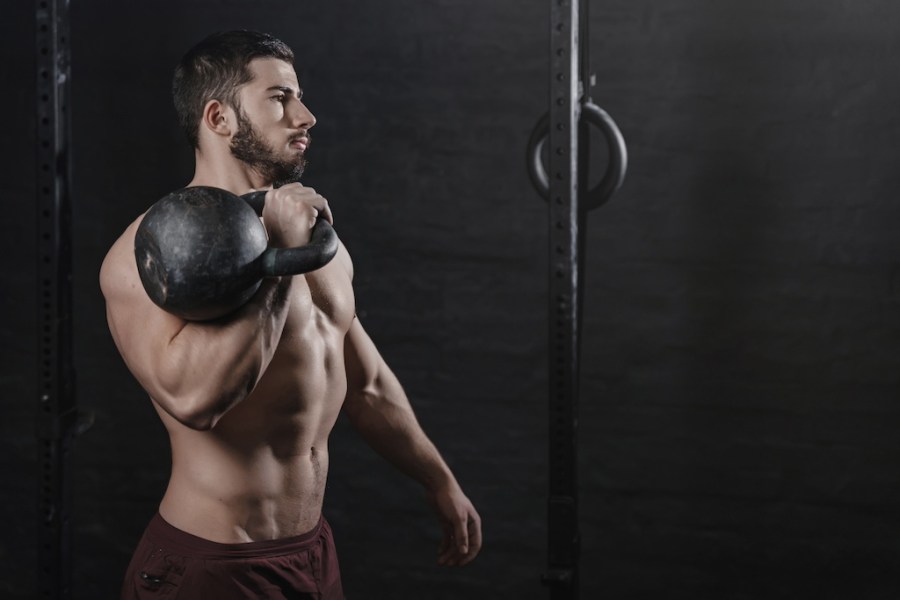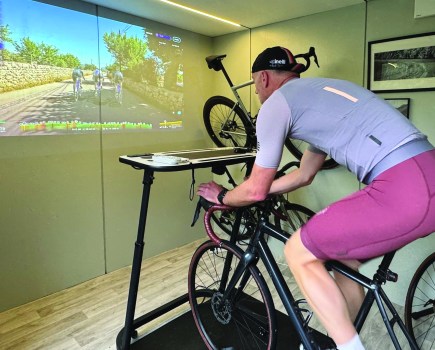Whether you’ve stocked up your home gym with the best kettlebells or are considering adding them to your regular workout routine, you might be thinking that they’re only good for functional strength, or general conditioning. But kettlebells can also be used for muscle building – you just need to use them correctly.
First, though, I want to highlight that time spent in the gym is only one piece of the muscle-building puzzle. Ensuring you get the right amount of protein, good overall nutrition and enough rest and recovery between workouts is key to facilitating growth.
Why you can trust Men’s Fitness
At Men’s Fitness we pride ourselves on delivering information that serves a singular purpose: to improve some aspect of your health, fitness or wellbeing. For almost 20 years, we’ve been publishing authoritative health and fitness content – written by our expert editors and contributors – in the form of the monthly Men’s Fitness magazine. This guide to building muscle with kettlebells was compiled by fitness journalist and MF contributor Charlie Allenby.
How to build muscle with kettlebells
Not all kettlebell exercises for beginners are created equal, so it’s important to target specific moves if muscle building is your sole aim. While circuits of kettlebell swings and Turkish get-ups will certainly get your heart pumping and strengthen your core, it’s important to hone in on the most effective exercises for the task at hand.
The clean and press is a full-body workout that builds strength from your legs to your grip, while single-leg deadlifts mimic the benefits of the traditionally bar-based Olympic lifts. Other muscle-building moves include lunges (legs, glutes, core stability) and rows (traps, rhomboids, lats and biceps).
Muscle-building rep ranges
Like other weight-based exercises, there’s a fine line to tread when it comes to reps and your desired outcome. Going too heavy and tiring quickly will result in greater overall strength, while going too light is going to benefit your endurance over anything else.
According to the American Council on Exercise, the sweet spot for muscle definition is between 8-15 reps, and the last rep should achieve momentary fatigue (where you feel like you couldn’t physically do another rep in that set) for the best results.
Fortunately, kettlebells come in a range of weights, so it should be quite straightforward to find a size that corresponds to your fatigue point with each exercise.
Other benefits of training with kettlebells
Posterior chain benefits
Even if your overall goal might be looking good in the mirror, kettlebells can help to strengthen your posterior chain – the group of muscles, including your glutes, hamstrings and erector spinae, that run down the back of your body – minimising the risk of injury further down the line. Kettlebell swings work all of the muscles in the posterior chain, but also have another couple of key benefits. Perform them vigorously enough and their full-body, high-intensity nature turns them into one of the best kettlebell exercises for fat loss, while they can also undo the negative impacts of a sedentary, desk-based job.
Strengthens stabilising muscles
Although having strong stabiliser muscles isn’t going to win you a bodybuilding competition any time soon, they will leave you with better balance, coordination and even distribution of muscle – enabling you to lift more efficiently when attempting muscle-building compound movements. Unlike a dumbbell or barbell, a kettlebell can be swung in multiple directions (and not just a single up-down or side-to-side plane of motion), improving your range of motion and mobility.








